
The Great Smoky Mountains National Park is a camper’s paradise, offering everything from lush forests and rolling streams to towering peaks and diverse wildlife. Pitching a tent here means immersing yourself in the beauty of one of America’s most beloved national parks. https://youtu.be/GmVNU9gCA2s
Thank you for reading this post, don't forget to subscribe!When it comes to camping spots, there are plenty of options. Families might enjoy the amenities found at Elkmont Campground, known for its rich history and proximity to the Little River. For those craving a more primitive experience, Abrams Creek Campground offers a tucked-away spot with fewer crowds.
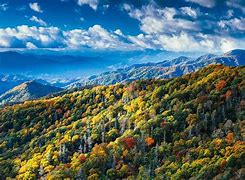
Gear up wisely. Sturdy tents, sleeping bags rated for varying temperatures, and cooking essentials are must-haves. A good first aid kit is non-negotiable. It’s not just about convenience—it’s about safety. The weather can be unpredictable, so pack layers and rain gear. Keep your campsite bear-proof by storing food in secure containers. Remember, it’s better to be over-prepared than caught off-guard.
Speaking of bears, wildlife interactions are part of the adventure. Bears, deer, and a variety of birds call this place home. It’s a thrill to spot them, but respect is key. Keep a safe distance and never feed the animals. Your food should be stored properly to avoid attracting curious critters. Follow park guidelines to keep both you and the wildlife safe.
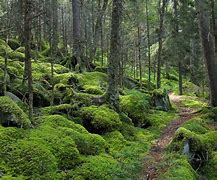
Keeping first aid tips in mind is crucial. From minor cuts to more serious incidents, knowing basic first aid can be a lifesaver. Carry that first aid kit with all the essentials: bandages, antiseptic wipes, pain relievers, and anything specific to your health needs. If you’re not familiar with wilderness first aid, consider a quick refresher or a course before your trip. A little knowledge can go a long way. Having a lantern in your nighttime camping travels is so convenient to have. As an Amazon associate, I earn from qualified purchases-https://amzn.to/4dxtW0Z
Hiking and Trails: Discovering the Park on Foot
The trails of the Great Smoky Mountains National Park are some of the best ways to experience its beauty up close and personal. With more than 800 miles of trails, there’s something for every hiker, from leisurely walks to challenging backcountry routes.
One of the top trails is the Alum Cave Trail. Starting off easy, it gradually becomes more challenging, offering incredible views and geological features. For those looking for something more demanding, the Charlies Bunion hike provides breathtaking panoramic views that make every step worth it.
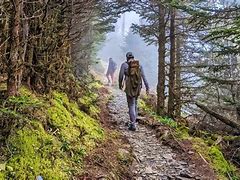
Guided tours are a fantastic way to learn about the area’s history and geology. Park rangers and local guides offer insights you might miss on your own. If you prefer a self-guided experience, grab a trail map from the visitor center and set your own pace.
Seasonal hiking offers its own unique perks. Spring brings vibrant wildflowers, summer displays lush greenery, autumn features dazzling fall colors, and winter showcases a serene, snow-dusted landscape. Each season has its pros and cons. Summer is gorgeous but crowded and hot, while winter offers solitude but requires more preparation for cold weather.
Packing right is key. Essentials include sturdy hiking boots, a daypack, plenty of water, snacks, and a good map. Don’t forget layers, rain gear, and sun protection. Familiarize yourself with the trail’s difficulty and conditions before heading out. The weather can change quickly in the mountains, so it’s best to be prepared for anything. A flashlight while camping is always good to have especially waterproof for all weather conditions and boating.

Whether you’re a seasoned hiker or a newbie, the Great Smoky Mountains offer trails that fit your skill level and interests. Happy hiking! Having proper equipment during your camping travels and a good fishing pole for any kind of fishing is good to have.
Beyond the Hike: Exploring Other Outdoor Activities
If hiking isn’t your only jam, Great Smoky Mountains National Park has plenty more to offer. Boating is a fantastic way to see the park from a different perspective. Fontana Lake and Douglas Lake are perfect spots for kayaking or canoeing. For a more leisurely day, rent a pontoon boat and enjoy the water at your own pace.
Now, if you’re up for an adrenaline rush, consider taking a helicopter tour. Soaring above the mountains gives you a bird’s-eye view of the sprawling forest, winding rivers, and majestic peaks. These tours are not only thrilling but offer a unique way to capture the park’s stunning landscape. Just make sure to book in advance, as these tours fill up quickly.

When it comes to where to stay, the park has a range of options from rustic lodges to plush hotels. LeConte Lodge, perched atop Mount LeConte, offers a more rugged experience with cabins and shared meals. On the other end of the spectrum, hotels in nearby Gatlinburg provide luxury and convenience, complete with modern amenities. Whatever your style, there’s a spot that’ll fit your needs.
For hunting enthusiasts, the park’s regulations are strict, but there are designated areas where hunting is allowed during specific seasons. Always check current rules and licensing requirements before setting out. Safety and adherence to regulations ensure that both you and the wildlife are protected.
Cultural and Natural Treasures of the Great Smoky Mountains
The Great Smoky Mountains National Park is not just about outdoor adventures; it’s also a place rich with history and culture. From ancient Native American trails to the remnants of early European settlements, the park offers a glimpse into the past. Stopping by one of the historical landmarks adds depth to your visit and offers a break from the physical activities.
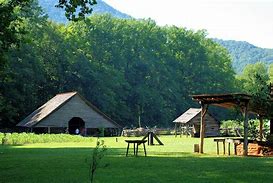
Wildlife lovers will find the park teeming with life. It’s home to an incredible range of animals, from black bears and white-tailed deer to over 200 species of birds. Don’t miss the chance to visit Cades Cove, a popular wildlife viewing area where you’re likely to spot these creatures in their natural habitat. Remember to bring binoculars and a camera for those perfect wildlife shots.
Flora in the park is just as mesmerizing. The park boasts more than 1,600 species of flowering plants. In the spring, wildflowers create a riot of color, while in the fall, the foliage turns into a breathtaking tapestry of reds, oranges, and yellows. For a deep dive into the local flora and fauna, check out the park’s educational programs, often led by knowledgeable rangers who offer guided walks and talks.
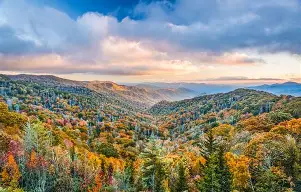
The visitor centers should be on the top of your list. The Sugarlands Visitor Center and the Oconaluftee Visitor Center provide excellent resources, including exhibits, films, and maps, to help you get the most out of your visit. Don’t overlook the museums and exhibits scattered throughout the park, offering fascinating insights into the area’s cultural and natural history.
From its trails to its historical landmarks and abundant wildlife, the Great Smoky Mountains National Park is a treasure trove of experiences waiting to be discovered. Wander through its landscapes, immerse yourself in its stories, and take home memories you’ll cherish forever.

This would be a good place to take a vacation getaway from the everyday routine of things. Have your camera with you to take awesome photos of the unforgettable scenery and camping would be an adventure along with other activities to do here. Leave a message at the bottom comment section if you like as I like to read other people’s opinions or experiences at places. Enjoy your visit at this location as this does look like an ideal place to visit. Jeff
Leave a Reply